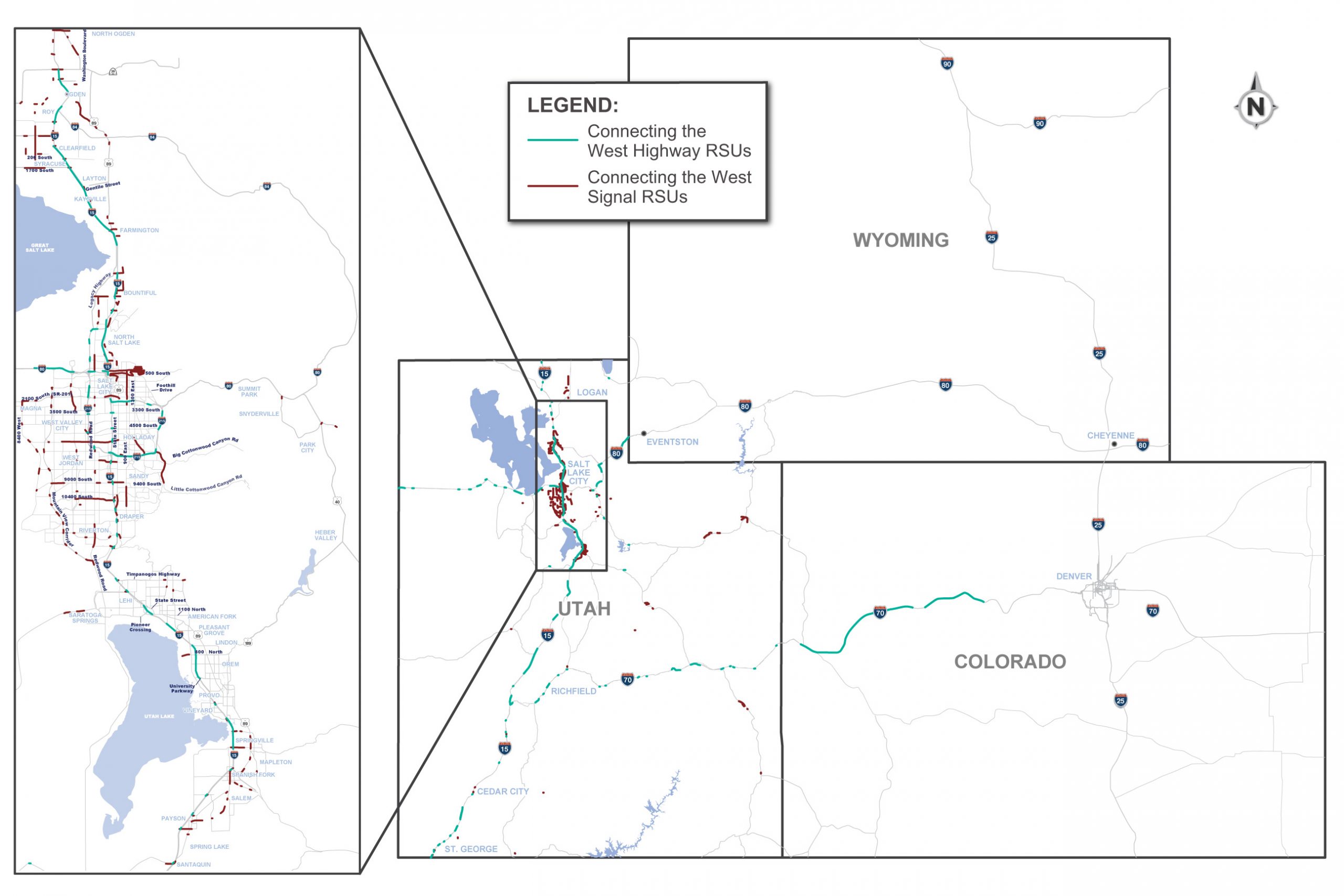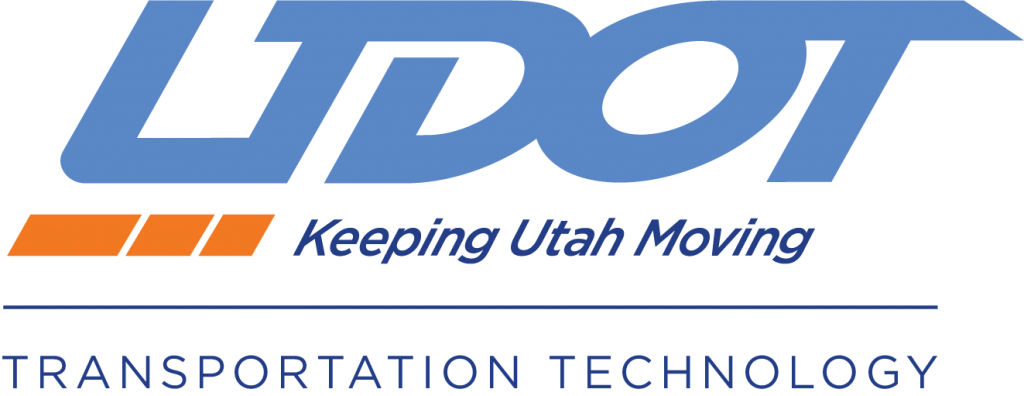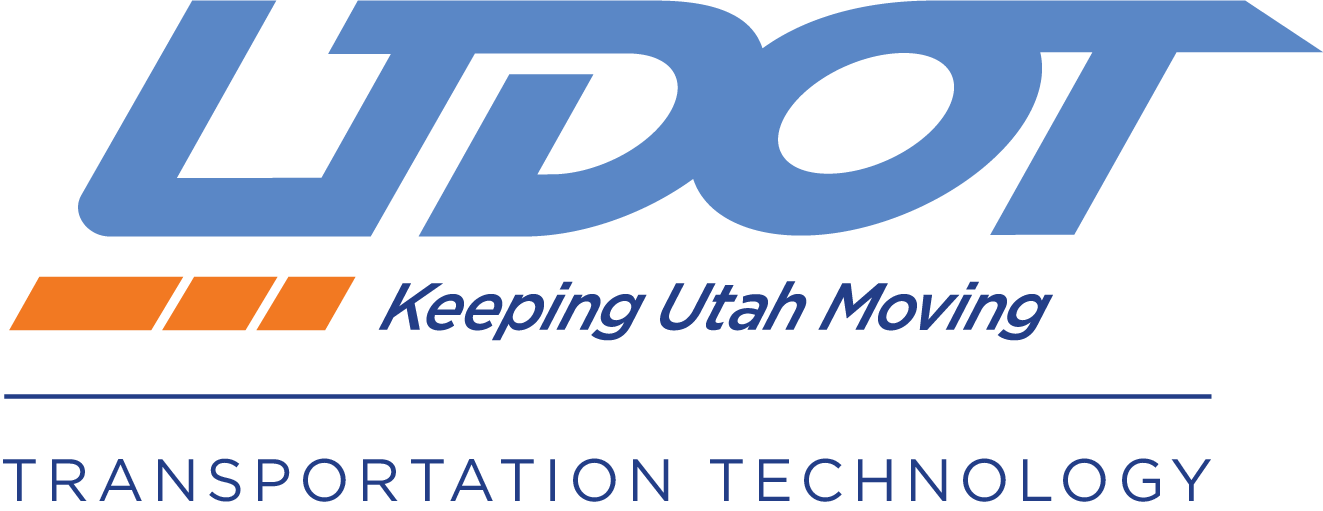Connecting the West Program


OVERVIEW
In June of 2024, the U.S. Department of Transportation (USDOT) awarded UDOT a $20 million grant to establish the Connecting the West program. This funding enables UDOT, the Colorado Department of Transportation (CDOT), the Wyoming Department of Transportation (WYDOT) and other involved partners to implement innovative technologies that save lives and increase mobility, advancing the USDOT’s mission of deploying connected vehicle networks on a national scale. In addition to the federal funds, UDOT and its partners have secured an additional $6.54 million, bringing the total project value to over $26 million.
As part of this collaboration, key infrastructure components and transportation-related technologies will continue to be deployed across the three states of Utah, Colorado, and Wyoming, increasing overall interoperability and connectedness across state lines. These technologies will include Traveler Information Messages (TIMs), Signal Preemption and Prioritization and LiDAR detection.
ITS AMERICA | CTW WEBINAR RECAP
On Thursday, October 2, 2025, the Intelligent Transportation Society of America hosted the first webinar of their V2X Accelerator Deployment Concept Series, collaborating with individuals working on the Connecting the West (CTW) project. Speakers from UDOT, CDOT, WYDOT, and Trihydro collectively provided insights into the planning and design of the CTW program, including challenges being addressed at the deployment site, the proposed system from a user perspective, and the project’s goals and performance measures. Watch the full webinar recording and review presentation materials below.
TIM MESSAGING
Traveler Information Messaging (TIM) plays a critical role in keeping drivers safe and informed. These real-time alerts provide updates about road conditions, weather hazards, speed limits and even work zones, helping drivers make better decisions and avoid potential danger. TIMs can warn drivers about icy roads, sudden weather changes or lane closures, giving them time to slow down or reroute to a safer route. The system uses advanced transportation technology, including data from roadside units and connected vehicles, to deliver accurate and timely messages directly to vehicles or third-party apps. By improving communication and promoting collaboration between states and agencies, TIMs help create safer, more efficient travel experiences across state lines.
SNOW PLOW PREEMPTION
The Snow Plow Preemption system utilizes V2X technology to ensure snowplows can operate efficiently during winter storms and clear roads for the safety of all drivers. When a snow plow approaches a traffic signal while actively clearing roads, the system preempts the red light, turning it green to keep the plow moving smoothly through equipped intersections. This technology not only speeds up snow removal but also enhances safety by reducing delays and the risk of incidents caused by icy conditions, and is currently deployed in certain areas of Colorado and Utah.
TRANSIT SIGNAL PRIORITIZATION
Designed to improve the reliability of bus schedules, Transit Signal Priority (TSP) enables equipped Utah Transit Authority (UTA) buses to communicate wirelessly with traffic signals along key corridors and certain intersections. When a bus falls behind schedule, it can request additional green light time from an equipped traffic signal, which evaluates the request. If approved, the signal grants the bus signal priority, maintaining the bus schedule and picking up riders on time. This system not only enhances rider confidence in transit reliability but also minimizes delays, supports fuel efficiency and encourages the use of public transportation.
LIDAR DETECTION
LiDAR (Light Detection and Ranging) technology is a key innovation within the Connecting the West program, used to enhance intersection safety of Vulnerable Road Users (VRUs). Using laser beams to create precise 3D representations of intersections, LiDAR provides traffic engineers with a complete view of vehicle, pedestrian and cyclist movements across several hundred feet in each direction. This comprehensive perspective enables engineers to identify safety concerns, such as near-miss crashes, red light violations or varying crosswalk timing at busy intersections. LiDAR integrates seamlessly with connected vehicle technology used in the Connecting the West Program, offering timely alerts to drivers about pedestrians, cyclists and other micromobility users at intersections. By combining advanced detection with connected vehicle communication, LiDAR significantly improves intersection safety, paving the way for a safer and smarter transportation network for drivers and pedestrians alike.
BENEFITS OF V2X TECHNOLOGY
As the Connecting the West program progresses, UDOT’s commitment to achieving Zero Roadway Fatalities grows closer to becoming a reality. The Connecting the West program continues to present itself as a scalable model, paving the way for potential nationwide adoption and enhanced roadway safety across the country.
Acting as a “digital seatbelt”, V2X technology is enhancing safety and mobility for drivers, surrounding vehicles and road users. Just as a seatbelt provides essential physical protection in a crash, V2X technology offers a virtual layer of safety by delivering real-time information and alerts to drivers. Whether warning about icy roads, coordinating snowplow movements or supporting transit schedules, V2X systems equip drivers with the tools they need to avoid hazards and make safer, more informed decisions while behind the wheel. This proactive approach reduces the likelihood of crashes and minimizes disruptions, making travel smoother and more efficient for everyone on the road.
The benefits of V2X extend beyond individual drivers, as the technology promotes a safer and smarter transportation ecosystem as a whole. Technologies like TIM messaging, Transit Signal Prioritization and LiDAR detection create a seamless network of communication between vehicles, traffic signals and infrastructure. These systems improve intersection safety, enhance transit reliability and ensure timely snow removal during storms, reducing delays and risks for all system users. By integrating innovative technology with collaborative efforts between states, the Connecting the West program is setting a new standard for roadway safety and efficiency, ensuring that every trip is safer, more reliable and interoperable.

TRUCK SMARTER, SAFER & CONNECTED: PARTNER WITH CONNECTING THE WEST
Are you a trucking company interested in shaping the future of freight transportation? UDOT is seeking industry partners to help deploy cutting-edge safety technology as part of the Connecting the West program. If you’re interested in equipping your fleet with onboard units and receiving real-time roadway alerts, fill out this brief form below to learn more and get involved.

